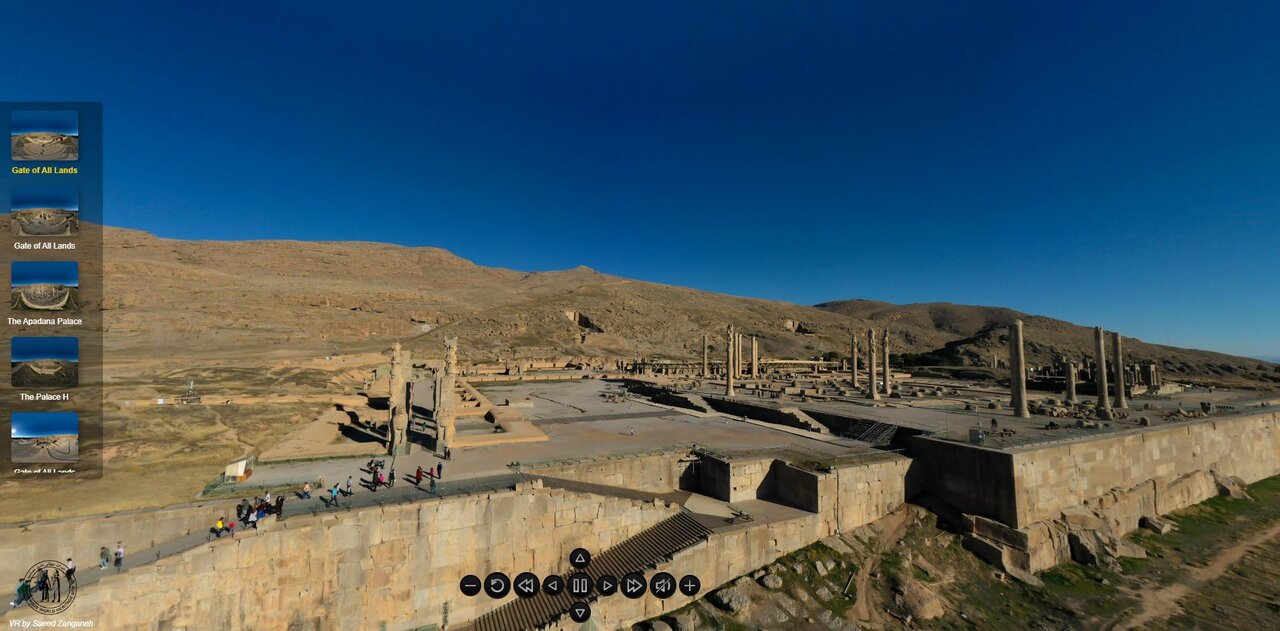Tourists get to know Persepolis through a digital voyage

TEHRAN - Persepolis, Iran’s crown jewel of ancient civilization, has opened its gates to the world with the launch of a comprehensive website and an immersive audio guide.
“With the launch of this website,” Director of the World Heritage site brought to light on Saturday. “Easy and comprehensive access to information, details, and event scheduling at this global site has been provided for the general public and enthusiasts.”
Alireza Askari-Chavardi further elaborated that this website includes various sections such as “About Persepolis,” “Achaemenid Artifacts,” “Knowledge Base,” and “Tourism,” each providing a detailed introduction to this historical collection.
Unique features of the Persepolis World Heritage Site website include a three-dimensional virtual tour, live broadcasting from Persepolis, a rich image gallery, and informative tourism sections including visitation information, accommodations, restaurants, and access routes, aiding visitors in fully acquainting themselves with the Persepolis World Heritage Site and experiencing a memorable journey before their visit, according to Askari-Chavardi.
The purpose of including “Live Broadcasting from Persepolis” on this website, he continued. “Is to present a live and accurate depiction of Persepolis, as Iran’s most important World Heritage Site and one of the masterpieces of ancient architecture, to the general enthusiasts.
The Persepolis website, serves as a reliable source of information in the field of Persepolis and the Achaemenid era, the director noted.

A screenshot of virtual tour to the Persepolis World Heritage Site.
Askari-Chavardi further explained that users and visitors of this website can regularly stay informed about the latest news, events, visiting hours, light and sound programs, and information related to Persepolis, and stay up-to-date with the latest developments and related programs.
This website also provides direct communication with the management of the site and relevant experts, he highlighted.
“The Persepolis website is continuously being updated and expanded to make the experience of visiting Persepolis more useful and engaging for everyone,” Askari-Chavardi elaborated.
According to the director, in the Suggestions section of the website, tourists can provide their feedback to improve services, and on the other hand, research proposals are provided for researchers interested in researching and studying Persepolis.
Persepolis, also known as Takht-e Jamshid, situated in the Fars province of modern-day Iran, stands as a testament to the grandeur of the ancient Persian Empire. Constructed primarily during the reign of Darius the Great in the 6th century BCE, Persepolis served as the ceremonial capital of the Achaemenid Empire, one of the most powerful empires of the ancient world.
Its name, meaning “City of Persians,” reflects its significance as a political and cultural center, where kings received tribute from subject nations and celebrated the annual festival of Nowruz, marking the Persian New Year and the onset of spring. Persepolis was adorned with impressive palaces, grand staircases, and intricately carved reliefs depicting scenes of royal ceremonies, battles, and symbolic representations of power and authority.
Despite its splendor, Persepolis met its tragic fate in 330 BCE when it was sacked and looted by Alexander the Great during his conquest of the Persian Empire. The city was subsequently abandoned and gradually fell into ruin, buried beneath centuries of sand and neglect.
Rediscovered in the 17th century, Persepolis has since been recognized as one of the world’s most important archaeological sites, offering invaluable insights into the art, architecture, and history of the ancient world. In 1979, it was designated a UNESCO World Heritage Site, further underscoring its significance as a cultural treasure of humanity.
Today, Persepolis continues to captivate visitors from around the globe with its majestic ruins and enduring legacy, serving as a reminder of the rise and fall of empires and the enduring spirit of human civilization.
XF
Leave a Comment